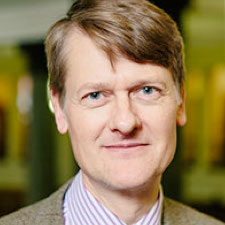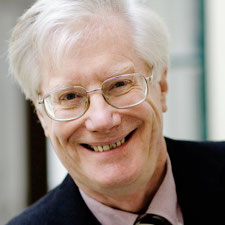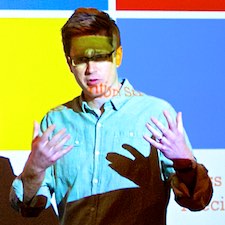A common-sense view is that when we perceive physical objects— tables and chairs—we simply become aware of those things and their properties. We become aware of a table and its squareness, a chair and its brownness. However, illusions and hallucinations have led some philosophers to doubt this.
In illusion you misperceive an object. For example, you might perceive a table but experience it to be round when it is actually square. Or you might experience a chair as being red when it is really brown. In hallucination it seems to you as if you are perceiving an object, but you are not. For example, you might hallucinate that there is a table in front of you, when there is not.
Some philosophers think that in illusion and hallucination you are aware of objects and properties—but those objects and properties are not the ones that surround you in the physical world. Instead, you are aware of mental objects and properties called “sense-data” that exist only in the mind. Moreover, many philosophers who endorse sense-data believe that even when we are veridically perceiving we are aware of sense-data. In illusions and hallucinations sense-data (usually) mislead us about the world. But in veridical perception they accurately tell us about the physical objects—tables and chairs—around us in the world. But we are aware of those physical objects only indirectly, in virtue of being directly aware of sense-data.
Sense-data theory is rejected by many philosophers because it posits mental entities—entities that are usually taken to be non-physical. Such a view contradicts physicalism, understood as the view that everything about the mind can be explained in terms of broadly physical entities.
However, we believe that this is not sufficient motivation to abandon sense-data theory. One reason is that it is not evident that physicalism is true. We shouldn’t reject sense-data theory if it turns out to be a good theory of perceptual experience, given that good theories of it are hard to find, but consider questioning physicalism instead.
Moreover, it has not been demonstrated that sense-data theory is incompatible with physicalism. That an entity is mental does not alone entail that it is not also physical. If the mind is dependent on the brain, and the brain is physical, then might not sense-data be physical too? One main aim of this project is to understand the metaphysical commitments of sense-data theory utilising recent developments in metaphysics about what dependence and fundamentality are.
We will also investigate whether sense-data theory gives a good account of all illusions and hallucinations. One reason to think that it does not is the alleged existence of illusions where subjects experience objects with contradictory properties (such as moving yet not changing position). If sense-data are as they appear to be, then such illusions or hallucinations imply the existence of impossible objects. But surely impossible objects cannot exist—that’s why they are impossible! We take this to be a serious challenge to sense-data theory. Our explorations will lead us to examine the ways properties such as space, time and motion are represented in our experience, drawing on the latest scientific results about illusions and hallucinations, and on philosophical reflection on the structure of experience.
More information about this project can be found here.
Image: Iceberg in the Southern Ocean, Liam Quinn

Fiona Macpherson
Principal Investigator

Stephan Leuenberger
Co-Investigator

Umut Baysan
Postdoc & Project Administrator

Derek Brown
Affiliated Faculty

Craig French
Affiliated Faculty

Alan Johnston
Affiliated Faculty

Robert Kentridge
Affiliated Faculty

Robin Le Poidevin
Affiliated Faculty

Howard Robinson
Affiliated Faculty

David Simmons
Affiliated Faculty

Keith Wilson
Affiliated Faculty